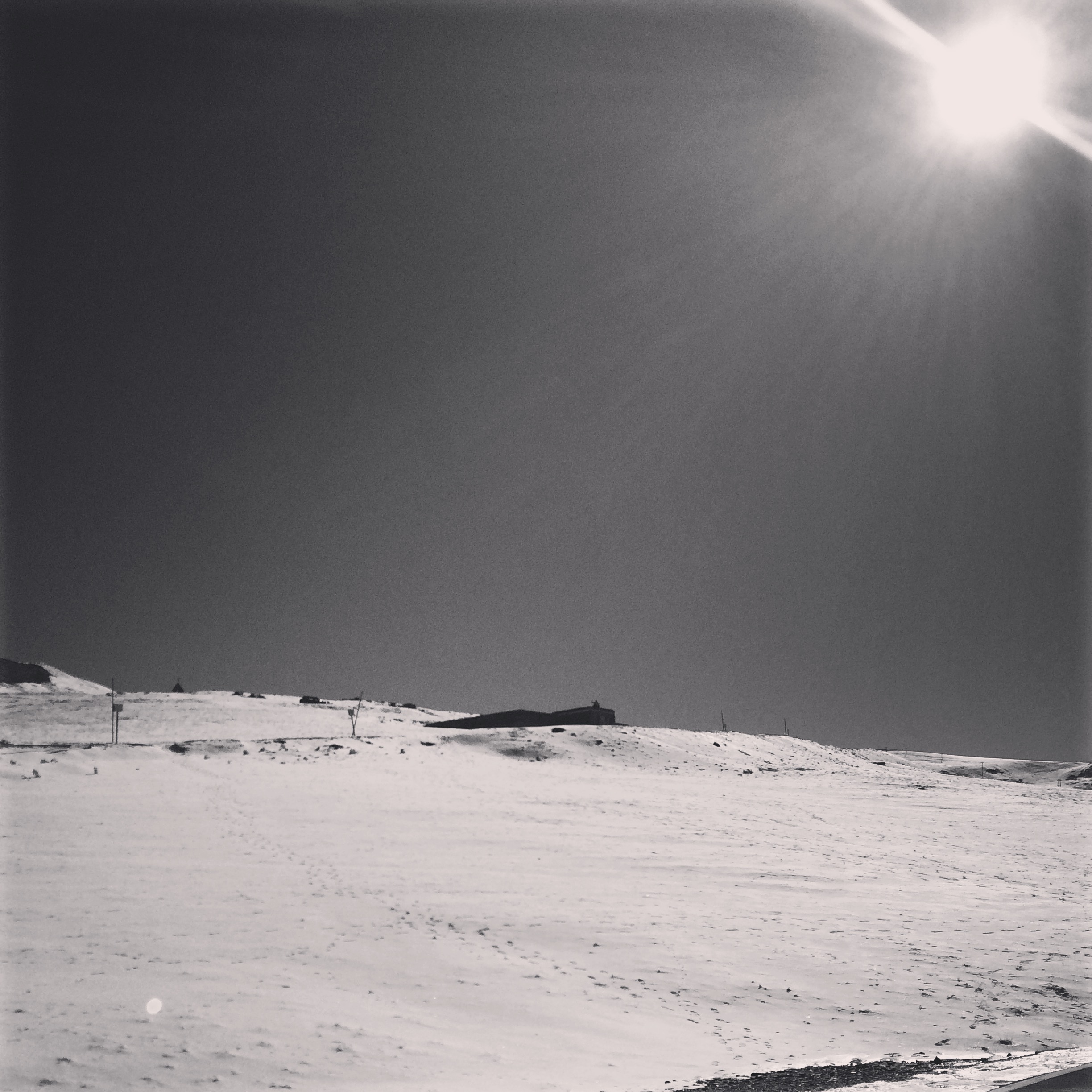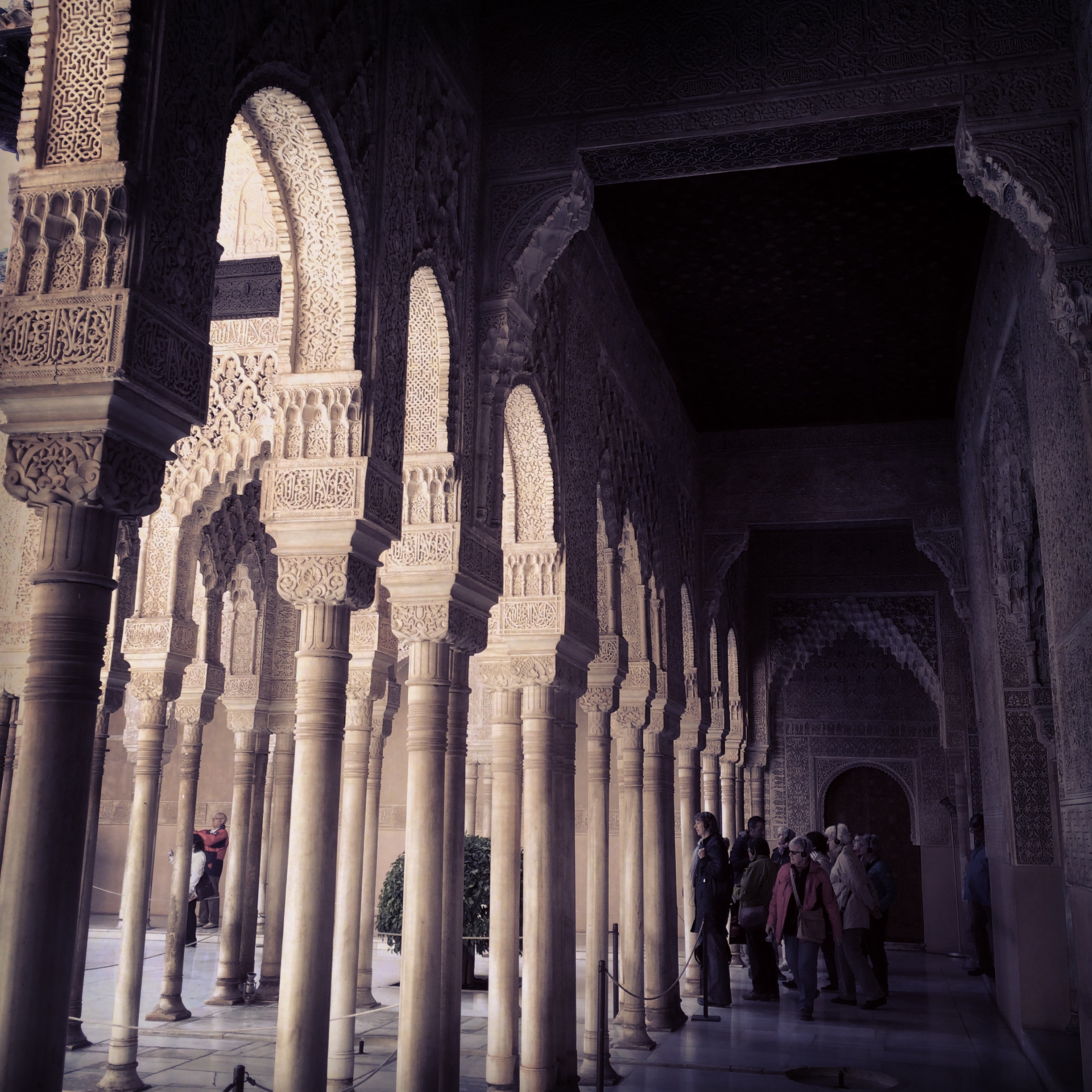The absolute beauty of Andalucia. One moment, you can be lying on a beach – this was in November – and the next, up in the snow of the Sierra Nevada mountains. With a trip to the Alhambra, in between.



the alhambra palace and generalife gardens
So, a bit about the history of the Alhambra, from alhambradegranada.org…
The Alhambra was so called because of its reddish walls (in Arabic, («qa’lat al-Hamra’» means Red Castle). It is located on top of the hill al-Sabika, on the left bank of the river Darro, to the west of the city of Granada and in front of the neighbourhoods of the Albaicin and of the Alcazaba.
The Alhambra is located on a strategic point, with a view over the whole city and the meadow (la Vega), and this fact leads to believe that other buildings were already on that site before the Muslims arrived. The complex is surrounded by ramparts and has an irregular shape. It limits with the valley of the river Darro on its northern side, with the valley of al-Sabika on its southern side and with the street Cuesta del Rey Chico on the eastern side. The Cuesta del Rey Chico is also the border between the neighbourhood of the Albaicin and the gardens of the Generalife, located on top of the Hill of the Sun (Cerro del Sol).
The first historical documents known about the Alhambra date from the 9th century and they refer to Sawwar ben Hamdun who, in the year 889, had to seek refuge in the Alcazaba, a fortress, and had to repair it due to the civil fights that were destroying the Caliphate of Cordoba, to which Granada then belonged. This site subsequently started to be extended and populated, although not yet as much as it would be later on, because the Ziri kings established their residence on the hill of the Albaicin.
The castle of the Alhambra was added to the city’s area within the ramparts in the 9th century, which implied that the castle became a military fortress with a view over the whole city. In spite of this, it was not until the arrival of the first king of the Nasrid dynasty, Mohammed ben Al-Hamar (Mohammed I, 1238-1273), in the 13th century, that the royal residence was established in the Alhambra. This event marked the beginning of the Alhambra’s most glorious period.
First of all, the old part of the Alcazaba was reinforced and the Watch Tower (Torre de la Vela) and the Keep (Torre del Homenaje) were built. Water was canalised from the river Darro, warehouses and deposits were built and the palace and the ramparts were started. These two elements were carried on by Mohammed II (1273-1302) and Mohammed III (1302-1309), who apparently also built public baths and the Mosque (Mezquita), on the site of which the current Church of Saint Mary was later built.
Yusuf I (1333-1353) and Mohammed V (1353-1391) are responsible for most of the constructions of the Alhambra that we can still admire today. From the improvements of the Alcazaba and the palaces, to the Patio of the Lions (Patio de los Leones) and its annexed rooms, including the extension of the area within the ramparts, the Justice Gate (Puerta de la Justicia), the extension and decoration of the towers, the building of the Baths (Baños), the Comares Room (Cuarto de Comares) and the Hall of the Boat (Sala de la Barca). Hardly anything remains from what the later Nasrid Kings did.
From the time of the Catholic Monarchs until today we must underline that Charles V ordered the demolition of a part of the complex in order to build the palace which bears his name. We must also remember the construction of the Emperor’s Chambers (habitaciones del Emperador) and the Queen’s Dressing Room (Peinador de la Reina) and that from the 18th century the Alhambra was abandoned. During the French domination part of the fortress was blown up and it was not until the 19th century that the process of repairing, restoring and preserving the complex started and is still maintained nowadays.
Our visit took place in November and we guessed it wouldn’t be quite as packed as in the summer, so chanced tickets when we arrived, and bought General Day Tickets which were approximately €15 each. These gave us access to a lot of the site, including Alcazaba, the Nasrid Palaces, the Generalife and Gardens.You can purchase a separate, less expensive ticket for just the gardens, but as the one we bought included the Gardens, we could also visit the Walk of the Cypresses (Paseo de los Cipreses), Unirrigated Land (Secano) and Saint Francis´Gardens (Jardines de San Francisco.). Your ticket will give you a time of entry and there is queuing system to enter – although obviously in November this was quite short. If you intend to visit in the summer months, come prepared for the heat and a long wait.
Once inside, the site is extensive and can be a bit overwhelming. Even if you’re not a history buff, it’s probably advisable to know a little bit about the Alhambra so that it makes sense. However, it is awe-inspiring and around every turn, your jaw will drop.





These photographs were taken in NOVEMBER. And, right at the end of November, too. A time of year when we’re used to it being grey and overcast – and even if sunny, there’s no colour to speak of. But not in Granada. The gardens are still full of colour and life and vibrancy. The sky, blue and cloudless. Perfect autumn weather. And a perfect time of year to visit this stunning Moorish site, which will make your jaw drop regularly, as you take in its vast splendour and beauty.
